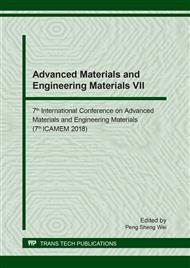p.3
p.8
p.13
p.17
p.22
p.27
p.32
p.37
Anti-Microbial and Self-Cleaning of Natural Rubber Latex Gloves by Adding Mangosteen Peel Powder
Abstract:
Mangosteen peel powder is one of the most important bio-antioxidants. Adding mangosteen peel powder as filler into natural rubber latex compound for latex glove film formation via dipping process can help the green anti-microbial properties. The physical (smoothness and thickness of film) and mechanical properties (tensile strength and elongation at break) of latex film are still good. Therefore, adding mangosteen peel powder into natural rubber latex gloves can reduce the anti-allergic and antimicrobial on the film surface. Mangosteen peel powder ground by rapid mill is fine particle and high surface area 2.4216 m2/g suitable for homogeneous and compatible for adding into natural rubber latex compound. Ceramic hand mold was dipped into the Ca (NO3)2 coagulant only 3 seconds, then dipped into the natural rubber latex compounds added mangosteen peel powder for 15 seconds, withdrawn hand mold slowly, cured in the oven at 120°C for 30 min, then dried at room temperature, and casted it off the hand mold. The obtained natural latex glove films added mangosteen peel powder are smooth, clear, and thin film surface, the highest elongation at break 803.2711 ± 31.6477%, good tensile strength 30.2933 ± 6.0218 MPa, dense film without water leakage, and good contact angle.
Info:
Periodical:
Pages:
3-7
Citation:
Online since:
August 2018
Authors:
Price:
Сopyright:
© 2018 Trans Tech Publications Ltd. All Rights Reserved
Share:
Citation:


